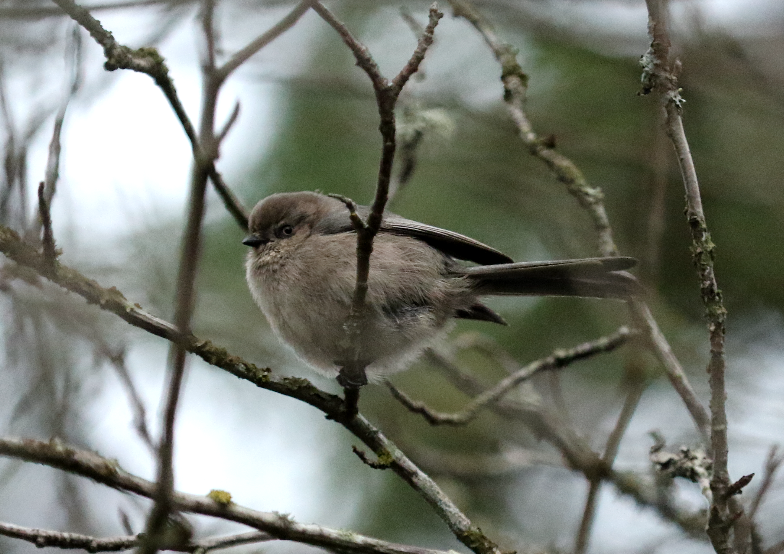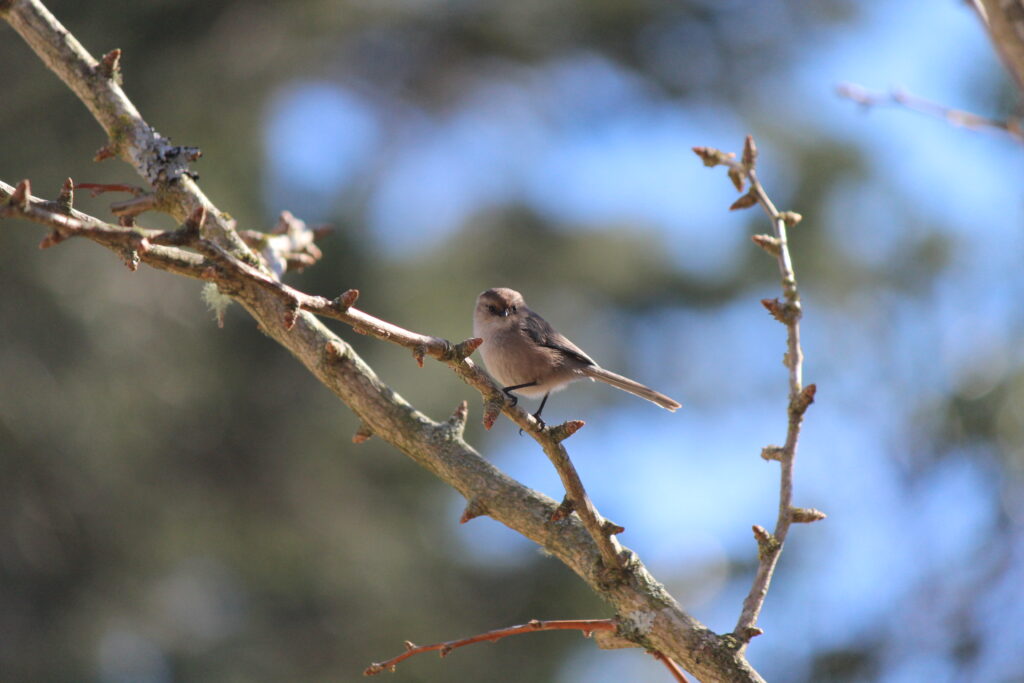Bushtit (Psaltriparus minimus)

Bushtits are tiny, inconspicuous songbirds with a grey-brown, plump body, long tail, and short, stubby beak. Bushtits are very social and are typically found in lively, constantly moving flocks. They move quickly through the shrubbery. Bushtits eat mostly insects that they forage from the foliage. They often mix with other songbirds while foraging because of their similar behaviour and niche; this includes species such as chickadees, kinglets, warblers, and nuthatches.

During breeding season the flocks dissolve into pairs. However, pairs are not typically alone because this species is known to breed cooperatively. Breeding cooperatively involves having other individuals help breeding pairs tend to their nest and raise their young during breeding season. This is not common among birds. Even more unusual is the fact that adult males are often the ones helping out breeding pairs, a role that males do not usually take on in cooperatively nesting birds. Bushtits weave an unusually shaped hanging nest out of moss, grass, spiderwebs, and other organic materials.

Bushtits can often be found along forest edges and within the shrubbery, moving quickly between branches. In Canada, the range of bushtits is limited to southwestern BC, mainly within the Georgia Depression. Bushtits are found at low elevations, typically under 250m. This species has no conservation concerns.
For more information, visit the British Columbia Breeding Bird Atlas, E-Fauna BC, and All About Birds by the Cornell Lab.


